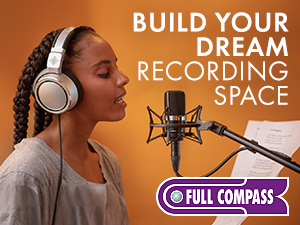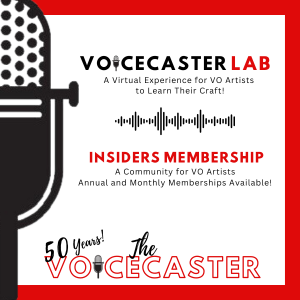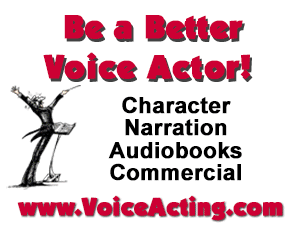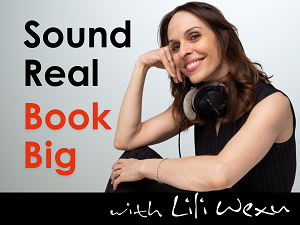|
VOICE ACTING Documentary Voice Overs: Opportunities AboundFor Narrators Who Understand The Growing Genre  By Kim Handysides By Kim HandysidesVoice Actor & Coach Ahhh, documentaries ...
Have you noticed that there are more documentaries than ever now,
and more people watching them? This is perhaps in part because of their
availability on streaming services (over a thousand available right now
on Netflix and Prime), but also because the styles of documentaries have
evolved. THE NEW 'REALITY' The nature of reality has
changed, too. Well, to be fair, our perception of the word "reality"
is what has changed (taken a beating, actually). We are attracted to
true stories, and documentaries capitalize on this attraction. However,
the realness we seek is often biased. The filmmaker often wants
to do more than inform: instead, to influence. Whether they went into it with a
fixed idea, or a message emerged after much shooting and living with
footage and the material, informing and making a case for their point of
view is their modus operandi. But that doesn't mean documentaries have gone the way of so-called Reality TV. The Academy of Motion Picture Arts and Sciences still defines
Documentaries as Films dealing with historical, social, scientific or
economic subjects, either photographed in actual occurrence or
re-enacted, where the emphasis is more on factual content than
entertainment. Reality TV, meanwhile, presents real people in live - though
often deliberately manufactured - situations, and monitors their emotions
and behavior for entertainment. In my fairly long career as a
voice over artist, I've had the good fortune to narrate several
documentaries, including an iMax film about NASA's probes and machines
called Touch the Stars. I love and appreciate this genre both as a performer and as a consumer. These days there are lots of opportunities for exploration for voice actors,
as this hothouse of a genre blossoms. But in order to explore, an
understanding of the various types of documentaries is important. SIX TYPES OF DOCUMENTARIES Film
educator Bill Nichols breaks down the six types of documentary films in his book Introduction to Documentary, so let's review them and briefly discuss the narration styles. 1. Expository
Expository These documentaries are
heavily researched and aim to educate and explain things – historical
events, social issues, cultures, exotic locations and animals we know
little about. They often include interviews, illustrative visuals,
actual footage, graphics, photos and a "voice of God" narrator. The
scripted narration connects the dots between story elements and often
relays the thesis or the argument. Many of the documentaries of Ken
Burns are created in this style. The narrator's role is guide and
storyteller. 2. Observational Also referred to as cinema verité, observational documentaries
are more direct cinema or fly-on-the-wall films. These films strive for
cinematic realism and often employ handheld cameras and portable sound
equipment so they can be shot anywhere, in almost any lighting and sound
environment and therefore follow the action as it unfolds. There tends
to be far less narration in observational documentaries, but if present,
would lean more journalistic in tone. 3. Participatory The participatory documentary
aims for immediacy. It often presents the filmmaker's point of view and
is regularly a recorded encounter between the filmmaker and the subject
they are documenting. Nichols notes that these films employ a dynamic shooting
style that captures 'man in the street' interviews as well as ambush
grillings of the powerful, staged sequences featuring the director and
mostly one-sided narration. Narrators in this genre, if they are not the
filmmaker themselves, are presenting the voice of the filmmaker. 4. Reflexive Documentaries made in reflexive mode ask
the audience to "question the authenticity of documentary in general,"
writes Nichols. For instance, Rob Reiner's mockumentary This is Spinal Tap, is a
reflexive piece focused on a fictional heavy metal band in decline. His
use of fake interviews, fake concert clips, improvised dialogue and a
'shaky cam' shooting style poke fun both at heavy metal culture and at
rock documentary conventions. Narrators in these types of documentaries
need to keep in mind their satirical nature. 5. Poetic Poetic documentaries aim to
create an impression or a mood rather than argue a point. Filmmakers
operating in the poetic mode typically emphasize cinematic values over
content to create visual poetry. The narrative, if there is one, is
expressed visually rather than rhetorically, so there is likely not a
lot of narration in this style, but if any exists, narrators should keep
in mind the overall goal of poetry and adapt their performance style
accordingly. 6. Performative Performative documentaries are the
direct opposite of the observational mode. Rather than unobtrusive
observation, these documentaries emphasize the filmmaker's own
involvement with the subject. They commonly focus a larger political or
historical reality through the lens of the filmmaker's own experience – becoming a personal guide. The guide shows it and tells it like it is
with raw emotion. Narrators should be especially careful to understand
and capture the filmmaker's POV in any narration. YOUR VISUAL BRAIN So what are the narration tools for voice actors who want to work on documentaries? Erica Ginsberg, Executive Director of Docs In Progress has a list here that I agree are key skills that a narrator needs to master to do effective documentary narration. First, the narrator needs to have a
visual brain and high visual acumen. This doesn't just mean a great
reading ability. Doc narrators need the ability to speak to picture
(knowing when to push it to enhance the story and when to lean on the
back foot and let the images do the work), and the ability to imagine the
visuals if they aren't provided/edited yet. Also, they should innately understand the
story and the writer's word choices – really grasping the message they
are trying to get across and reflecting that with nuance and skill. A
passable narrator recites lines. But a skilled narrator is a storyteller,
employing pacing and dimension.They must be inside the writer's mind
and heart. BRING YOUR CREATIVITY In addition, a great narrator brings
something creative to the project. Documentaries are known for their
myriad styles, and the narration often matches it in some way. For instance,
This choice is a statement in and of itself. Narrators should feel free to
try different readings to give directors options, and feel like they are
providing an added dimension to the story. Great narrators also understand
timing and know that it can be everything in narration. A keen sense of
how to adjust the pace but still sound authentic can help ensure fewer
things to "fix in post." And all the while, a powerhouse narrator needs
to be cool under pressure, and be able to adapt to script changes or
adjustments in what's on screen smoothly. LEARN FROM THE MASTERS It's important to pay attention to and learn from how master documentary filmmakers speak about the narration in their work. In his Master class, Ken Burns says, "The
narrator is one of the most important forces in the film, and, you
hope, one of the most invisible. That person has to be really good, and
so confident that they've earned your trust early on. And so they're
just guiding you through." Burns maintains that a doc narrator has to inhabit
the words, always telling, revealing, but never selling. Matt Seitz, editor-in-chief of rogerebert.com and television critic for New York Magazine, notes how the voice over can be used skillfully to enhance the film's narration:
And the academic Charles Wolfe wrote
in an article for Film History:
YOUR POWER AS NARRATOR The true power of a documentary voice over
comes from its ability to communicate with the audience. The voice over
acts as a conduit between the documentary's story and the viewer. The
voice over is an invaluable tool for the filmmaker to use to speak
directly to his audience, establish a connection and imbue the work with
authority, which gently persuades without the viewer even noticing. Sir David Attenborough, perhaps one of the most famous documentary
narrators, creates what has been called an "illusion of presence." So
much so that when the illusion slips, audiences have reacted with a
sense of betrayal over any revelation that scenes in his documentaries
were not filmed on location (as with a tour of a polar bear's den in
Frozen Planet). Attenborough is a master at creating the sensation that
the viewer is present in the scene and viewing it with their own eyes. After all, that's the real power of all voice over ----------------- ABOUT KIM Kim Handysides is a top voice over artist in commercials, eLearning and narration. With a background in theatre and film and a thorough grounding in radio and television, she's a 2019 Voice Arts Awards winner and five-time nominee, and "loves sharing advice, tips and experience with anyone who asks." She is also a voice over coach, offering private coaching and group study classes - and loves dogs, mountains, beaches and story. |
As of the NEW website launch, 03/22/2012









.png)
Keep writing. You are very good at it.